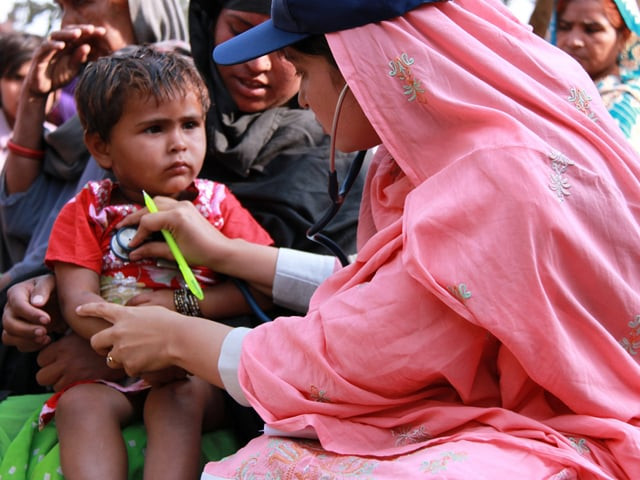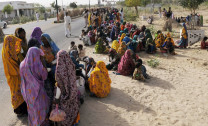Flood aftermath: Living on the edge of the essential
Survivors still in the process of being rehabilitated.

Flood aftermath: Living on the edge of the essential
Two weeks ago, massive downpour left three-year-old Mushtaq’s village in Badin underwater. Mushtaq’s family of seven moved to a safer area and later found refuge at a relief camp set up in a government boys’ school near Badin city, said a press release issued by Save the Children, an NGO.
Hanif, Mushtaq’s father said Mushtaq has been very weak since he was born. “Ever since we moved to the camp, he has lost weight and has become lethargic. He does not talk or play like other children of his age.”
He added there are no health facilities at their camp and they lack sufficient food to feed the entire family. When they arrived there, Hanif took his son to a local clinic but the medicines prescribed by the doctor were too expensive for them to buy.
Mushtaq’s condition further worsened during the past week as he has stopped eating and is only breastfed by his mother.
Save the Children Pakistan Country Director David Wright said, “Children are still distressed and are living in desperate conditions with families barely able to feed themselves having lost everything once again.”
At least four million children are at risk of hunger and disease in Sindh as funding fatigue from rich nations continues to fuel the desperation faced by families, according to the organisation.
Wright added their stocks of food have been wiped out by flooding and they don’t have the money to buy food. People have been cut off from help in some areas due to the damage caused by floodwater.
Save the Children has started delivering food rations to 5,000 families in Sanghar district, where a total of 900,000 people have been affected by flooding, according to local authorities. Only 145,000 people are receiving assistance in camps and the rest have to fend for themselves.
“In Sanghar, people are living in makeshift shelters made from rushes and sticks and most families are surviving on small portions of rice, bread and vegetables. Floodwater is four feet high, so it’s impossible for aid agencies to set up there as offices are under water. Children and families are drinking from floodwater contaminated with sewage,” Wright added.
Published in The Express Tribune, September 28th, 2011.



















COMMENTS
Comments are moderated and generally will be posted if they are on-topic and not abusive.
For more information, please see our Comments FAQ